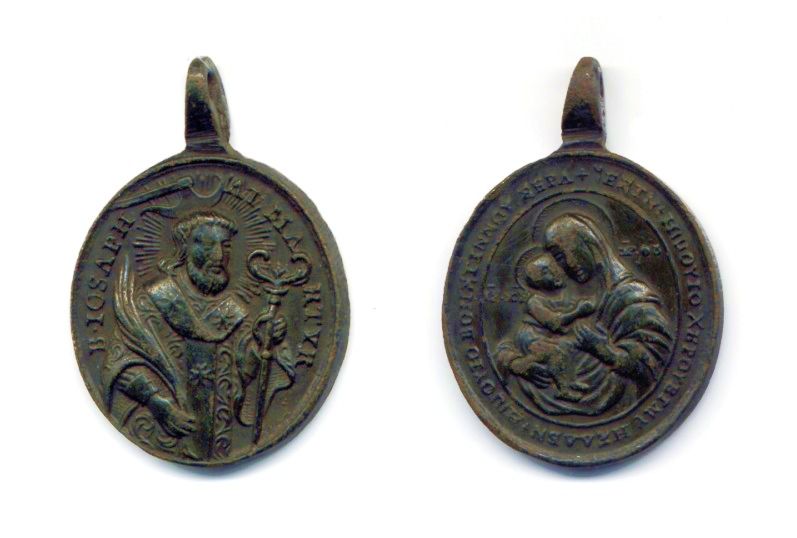A daily study of the Network’s diverse faiths

Rosh Hashana (ראש השנה, Head of the Year, Feast of Trumpets). Celebration of Jewish New Year starting ten days before Yom Kippur, the holiest day of the Jewish year, and from the evening of 6 September to the evening of 8 September, a time of inner renewal and divine atonement. These days are 1 and 2 Tishrei (תִּשְׁרֵי) 5782, the first month of the Jewish civil year and the seventh month of the ecclesiastical year that starts on 1 Nisan in the Hebrew lunisolar calendar. The celebration normally includes large feasts on both days but some Jews observe only the first day. Customary celebratory dishes include fish heads, brisket, a tzimmes (big fuss) casserole, challah (חַלָּה, tithe) bread, honey cake and apples dipped in honey and pomegranates for a sweet new year. The greeting is Leshanah Tovah Tikatev (May you have a good year). Observances include ritual male immersion, praying in the synagogue, personal reflection, hearing the shofar (ram’s horn) at Park Row, Bristol Synagogue in the late mornings and at the Clifton Observatory this evening. The observances are free and all are welcome. Blowing the shofar is stipulated in the Torah to recall Abraham’s sacrifice of a ram instead of his son Isaac, and to raise a noise on the biblical Yom Teruah (יוֹם תְּרוּעָה, Day of Shouting or Blasting), the first of the Jewish High Holy Days (יָמִים נוֹרָאִים, Days of Awe) required by Leviticus 23:23-32 that take place in the early autumn of the Northern Hemisphere. Breadcrumbs are thrown into a naturally running body of water as a means of casting away ones sins. According to the Talmud, 1 Tishrei c3760 BCE is considered the day Adam and Eve were created. Image: ibgnews.com

Founding of the Legion of Mary (Legio Mariae) (1921 Dublin, Ireland). Centennial anniversary of the founding of the Roman Catholic Marian Movement, by layman and civil servant Frank Duff, that now has over 10 million active and auxiliary (praying) members worldwide, the largest apostolic lay organisation in the Roman Catholic Church. Membership is highest in South Korea, the Philippines, Brazil, Argentina and the Democratic Republic of Congo, each having 250,000-500,000 members. Members are baptised Catholics who believe in the teachings of this international association of volunteers, of which the stated mission is for active members to serve God under the banner of Mary by the corporal and spiritual works of Mercy. The main apostolate of the Legion is activities directed towards Catholics and non-Catholics encouraging them in their faith or inviting them to become Catholic. Members are engaged primarily in the performance of spiritual works of mercy, rather than works of material aid. The Legion first started out by visiting in hospital women with cancer but it soon became active among the most destitute, notably among Dublin prostitutes. Duff subsequently laid down the Legion system in the 1928 Handbook of the Legion of Mary and the Legion spread around the world, at first meeting with mistrust because of its then-unusual dedication to lay apostolate. The basic unit of the Legion is a Praesidium, normally based in a parish and of 3 to 20 members meeting weekly. A Curia supervises several Praesidia and a Comitium has charge of several Curiae, usually over a city or province. The next level is the Regia, in charge of larger provinces or states. The Senatus generally has control over the Regiae in a larger area, usually a country or very large territory. The Concilium is the highest level and has its seat in Dublin with control over the whole Legion. Each level of the Legion has the same officers: the President, the Vice-President, the Secretary, the Treasurer and the Spiritual Director. The last of these is always of the clergy but all other offices are held by the laity and all positions, regardless of responsibility, are voluntary, the Legion having no paid workers. Permanent, active members take an oath of Legion promise, a pledge of allegiance to the Holy Spirit and to Mary. Membership is essentially based on discipline and commitment, with members devoting their time and prayers for the intentions of Mary, Mother of God. Active members attend weekly sessions and their main rôle lies in active apostolate for the Legion and the Church. Auxiliary members support the Legion with their daily prayers, which go through the whole of the Tessera, their booklet of Legion prayers. Image: devotiontoourlady.com.

Matka Boża Żyrowicza (Our Lady of Zyrowicz). This miraculous icon is honoured at a Ruthenian sanctuary near Novogrudok, Lithuanian-Poland, where in 1613 a Basilian monastery of the eastern monastic order for both the Orthodox and Catholics was founded and became one of the main Marian sanctuaries of the Uniate Church in Lithuania. The legendary miraculous appearance of the icon and its being saved from fire by the Holy Lady drew pilgrims from a wide area to the monastery. The original icon from c1475, mentioned in the Russian menologies, was much revered by the martyred bishop Św Jozafat Kunkiewicz (St Josaphat Kuntevich) (c1580-1623) and the Basilian monks of St Josaphat still guard that image. In 1719, a copy of the icon was found in the monastery of the Ruthenian monks in Rome, who enshrined it in their church of Sts Sergius and Bacchus, where miracles were reported that made the church so well-known that the Romans referred to it as Santa Maria del Pascolo. Image: wkregusakrum.blogspot.com.
Prayer O God, Whose only-begotten Son, by His life, death and resurrection, purchased for us the rewards of eternal salvation, grant, we beseech You, that meditating upon these mysteries in the most holy Rosary of the Blessed Virgin Mary, we may imitate their contents and obtain their promises. Amen
